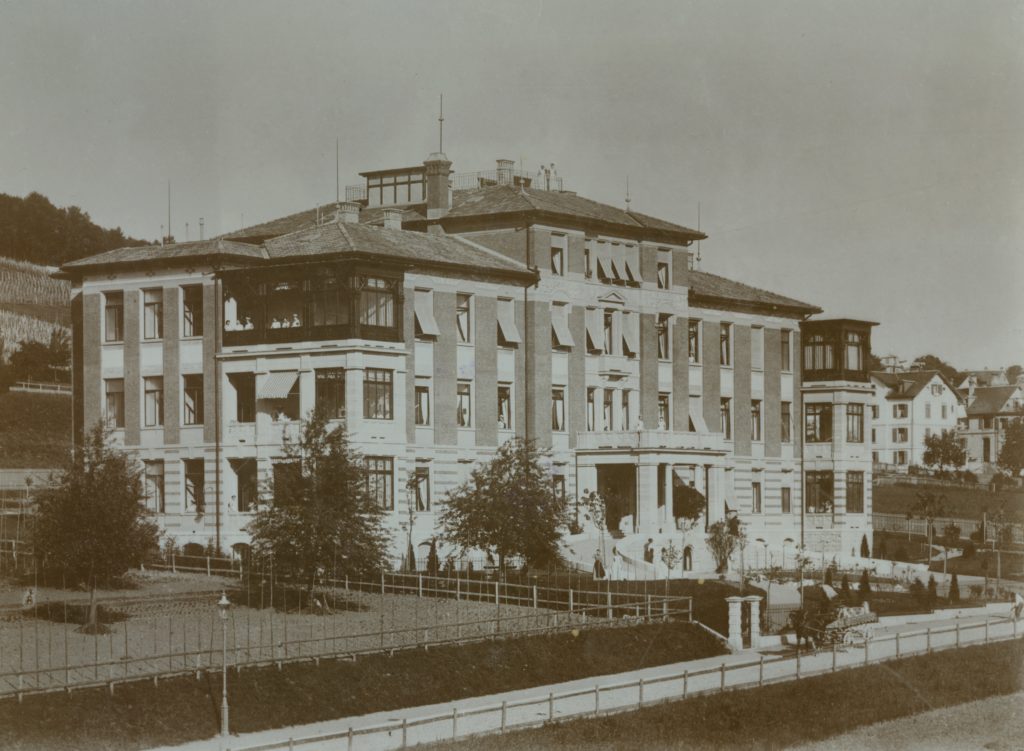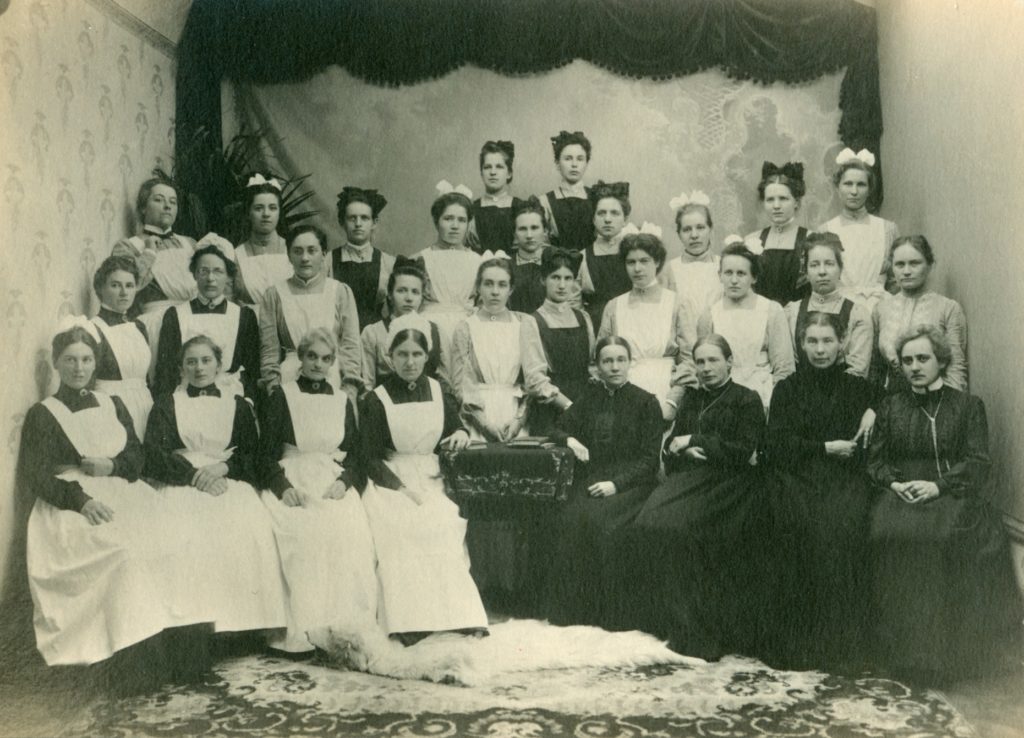This post is also available in:
 Deutsch
Deutsch
Anna Heer convinced the Swiss Charitable Women’s Association (Schweizerischer Gemeinnütziger Frauenverein) to support her idea of a nursing school with a hospital. However, the story did not go without power struggles. The founders had their own ideas and were more willing to take risks than many members of the association would have dared. Anna Heer and Ida Schneider only appointed a few men of their trust to the building commission, otherwise it remained a work „by women, for women” in the truest sense of the word.
While the building grew in height, there were gaps in financing. In their distress, the women helped themselves by issuing bonds. Thanks to their good connections, they were able to place them with wealthy patrons. On 30 March 1901, the female founders invited to a festive opening ceremony. On 5 April 1901, the first student entered the Swiss Nursing School.
Historian Verena E. Müller on the founding of the Swiss Nursing School (in German)
The first patients
Conditions in the hospital and the school developed more satisfactorily from month to month. The „Pflegi” gained the confidence of the people. In the first decade, the number of patients rose steadily. Of all places, however, the birth ward developed more slowly than had been hoped. The scarce financial basis, a legacy from the construction period, was a burden on the budget in the first few years.
The management also worried because less patients than hoped chose the private department. Patients in the general department were welcome, but they had a negative impact on finances. Only few women had a health insurance. For social reasons, it was impossible to charge uninsured patients the full costs. All these years, the nursing school tried to keep the tariffs as low as possible and made up for deficits through donations.

Evening classes
In addition to her medical duties, teaching was one of the responsibilities of chief physician Anna Heer. The lessons were scheduled for the evening after the end of the hospital workday. The students woke up at 5.30 a.m., had breakfast at 6 a.m. and sat at the school desk at 8 p.m. – sleepy. After the first theoretical year, the nurses moved to another hospital for the internship. Head nurse Ida Schneider had overall responsibility for the school until 1914.
Expansion
After only a few years, there was a shortage in space. In 1906, the school managed to buy an adjacent plot of land from the city. In 1908, the students moved into the new nurses’ house. Again the Swiss Nursing School needed a big charity campaign.
Anna Heer did not save on medical innovations. In 1910, the women’s hospital purchased of an X-ray machine, which was also a huge investment, but paid off.

A women’s enterprise
The female management put value on generous celebrations for special occasions. All those involved remembered the Christmas parties and diploma celebrations for a lifetime. The daily life at the women’s enterprise was not equally harmonious. In 1914, one of the doctors, Dr. Anna Baltischwiler, felt restricted in her competences and achieved that superior Ida Schneider withdrew from the operative business.
___
Text: Verena E. Müller
